Station details in model and real life, part 1
Small-series manufacturers offer many products that can make our layouts more detailed. However, many times a modeller doesn't know how a particular item should be used or placed correctly. For this reason, I decided to write this short text focusing mostly on devices and items that you can easily build from Hekttor photo-etched kits - derailer, stand with chocks and point switching mechanism. I will try to provide description of each device, photos and occasional ideas on how to improve it even more.
Derailer
The derailer is a safety device for preventing fouling of a train path. The purpose of the derailer (as its name suggests) is to derail a car/engine that goes over it. We can find two basic types in the Czech Republic. The older one (img. 1 + 2) and the newer one (img. 3). Both types are permanently fixed in the track. Occasionally we can encounter a portable derailer, which is fixed in the tracks with a long handle. P/E kit from Hekttor represents the newer model, so the text will focus on it.
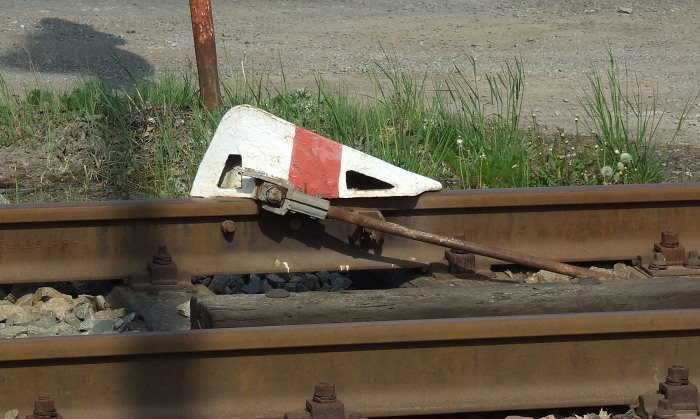
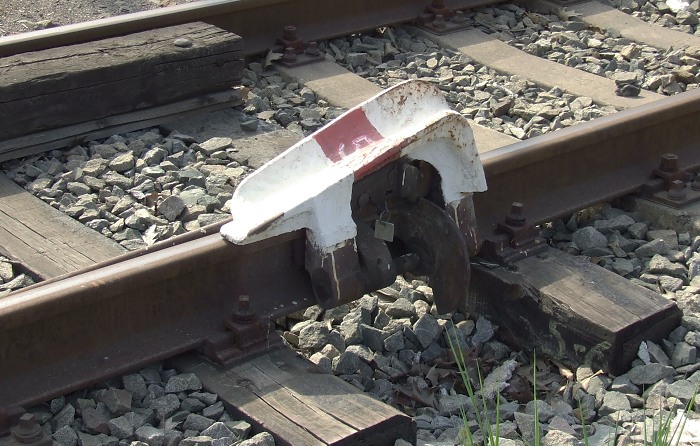
Older derailer type in Lanškroun station
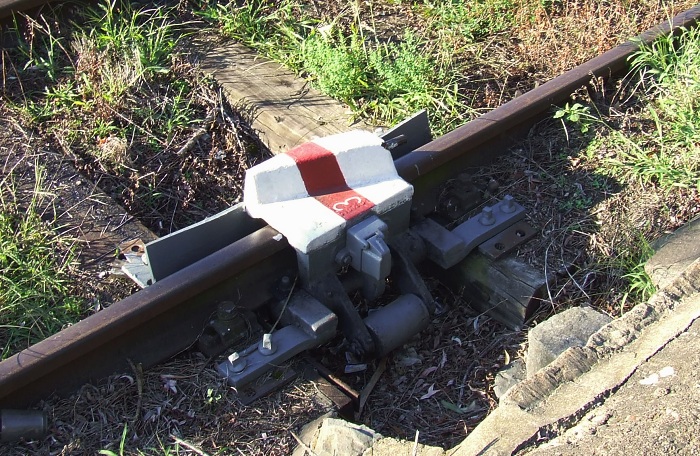
Newer type in Praha-Ruzyně
The core of the derailer is a steel skewed block which, in closed state, is lying directly on the rail. Wheel of a car going over the derailer is lifted and sent out of the tracks by the skewed part, effectively derailing the car and stopping it. When open, the derailer doesn't block the passage in any way.
Derailers can be operated manually (secured by a key) or using a mechanical or electric switch machine. They can also be integrated into the station's interlocking system.
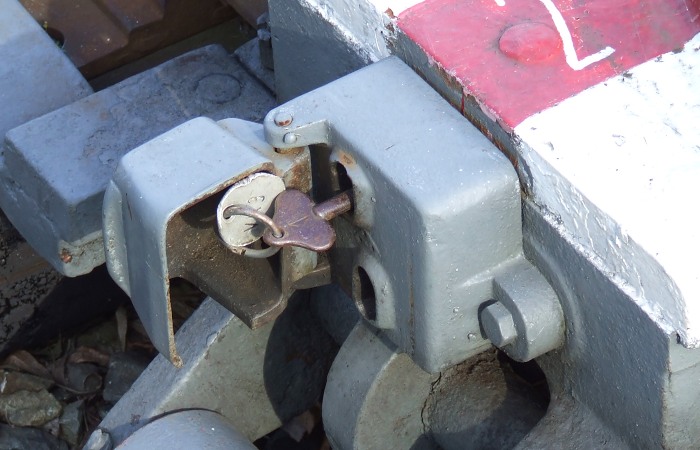
Derailer lock with the key - Praha-Ruzyně
Derailers are installed on sidings or loading tracks where any unwanted car movement could lead to endangering a safe train passage on adjacent tracks. Derailer is installed 3 meters from of the fouling marker (white concrete block with two black stripes) either on the right or the left rail, so the car would be led away from the track the derailer secures. Based on the direction to where the derailer leads the wheel we distinguish left and right derailers. Unless there is a special reason, derailers are not installed where a deflecting track is available. In case there is a railroad crossing on the siding/loading track, it is usually secured with a pair of derailers, one on each side of it, primarily preventing any runaway rolling stock from entering the open crossing (eg. Dobříš, Chotěboř, Golčův Jeníkov and many more).
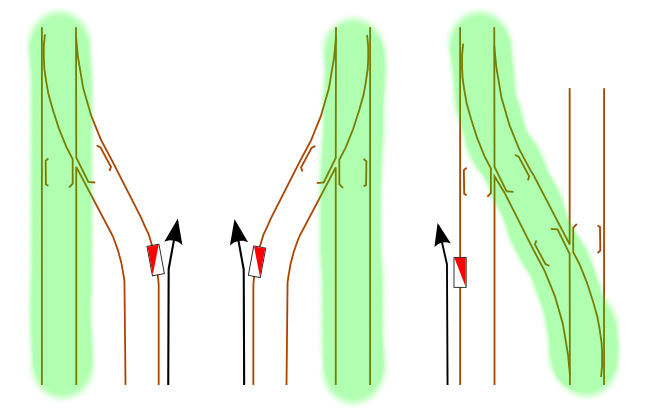
Derailer placement schemas
The image above shows the placement of the derailer on the tracks. The red triangle represents the skewed block of the derailer, the train path being protected is shown in green and the black arrow shows the direction in which the runaway rolling stock should depart the tracks when going over the closed derailer.
Below are few examples of various derailers to get you inspired.
1) Manually operated derailer without any signal
The easiest version to build from the Hekttor kit (all the other versions require some level of modification or scratch building). The derailer doesn't have any additional device or signal. It is secured by a key that can be a part of the interlocking system. This version of the derailer is not installed at new locations anymore. Newly installed derailer must have a related signal too.
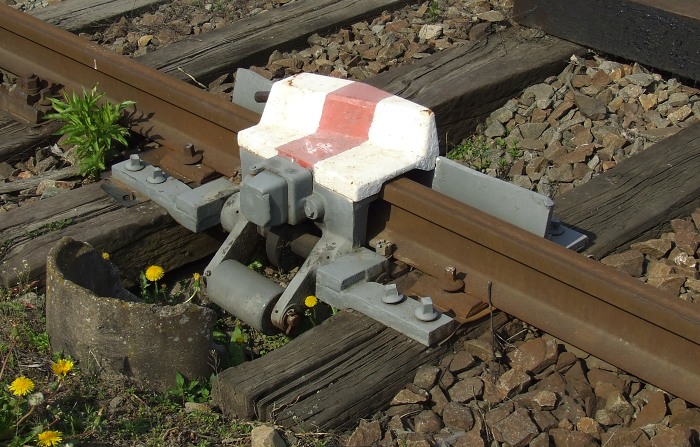
Manually operated derailer without a signal - Lanškroun
2) Manually operated derailer with a signal
A derailer can be mechanically tied to a signal showing the state of the derailer (open/closed). Nowadays only the derailers with the signal showing "shunting not allowed" (closed) or "passage in straight direction" (open) are being installed.
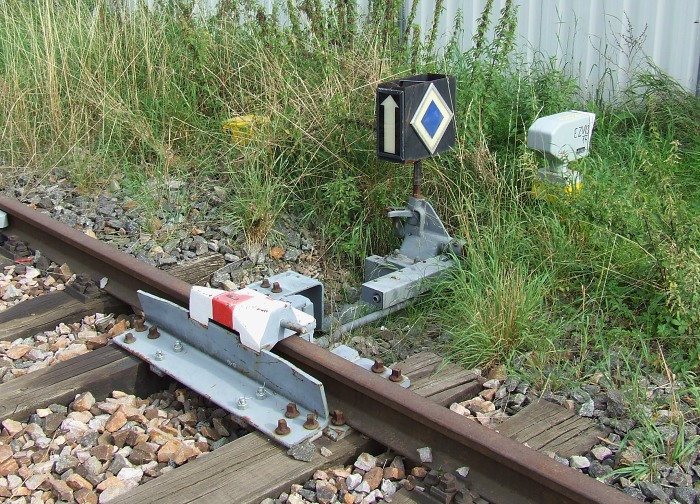
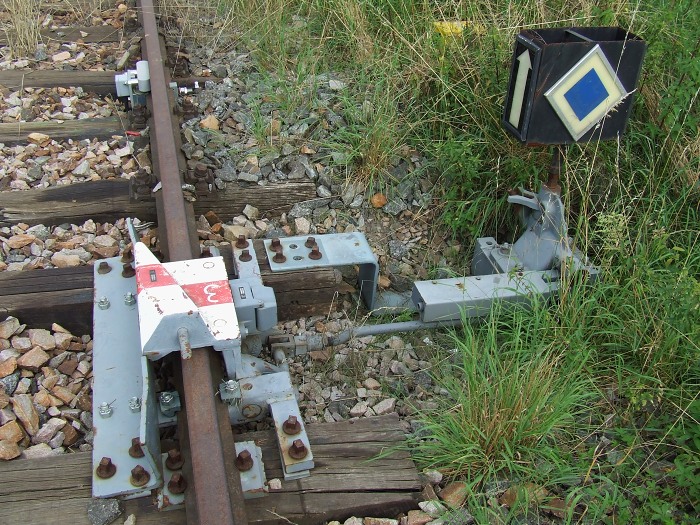
Derailer coupled to a signal showing "shunting not allowed" - Praha-Dejvice
We can still find some derailers coupled to signal showing either "stop, the track is closed" and "passage in straight direction" combination (see the photo from Lanškroun) or "stop, the track is closed" and "track enclosure cancelled".
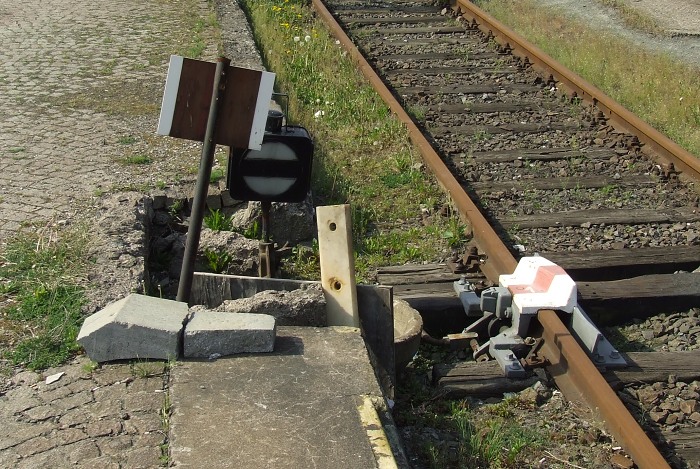
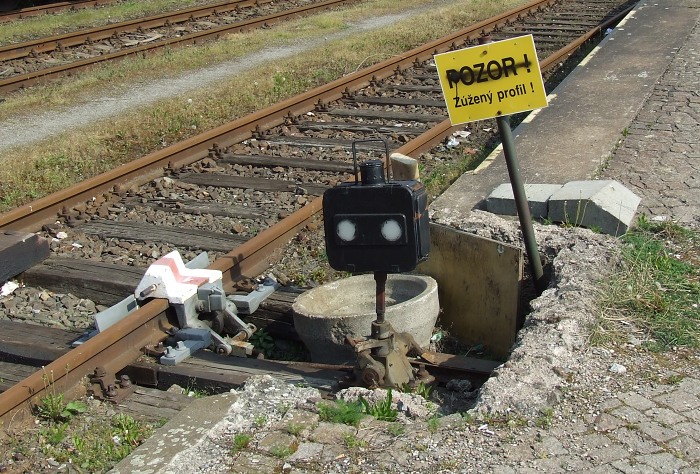
Derailer coupled with signal showing "stop, the track is closed" - Lanškroun
3) Remotely operated derailer
The previous two examples presented derailers operated manually in place. Remotely operated derailers contain a mechanical or electrical switching machine. The example of the mechanical one is a derailer from the Praha-Ruzyně and the example of electrically operated derailer comes from Praha-Dejvice.
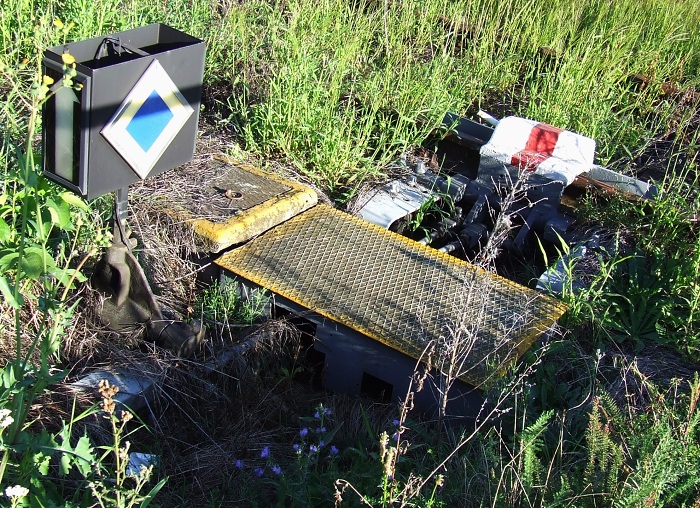
Remotely operated derailer (mechanical) - Praha-Ruzyně
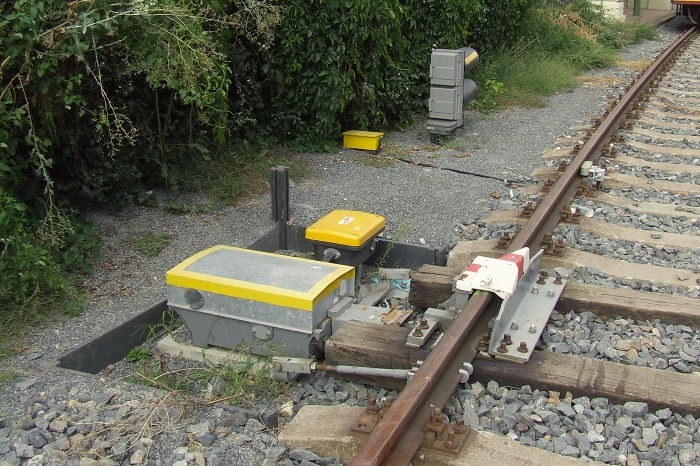
Remotely operated derailer with electric switching machine - Praha-Dejvice
4) Derailer protected with a shunting signal
The photo from Praha-Dejvice also demonstrates another derailer version. When the station was reconstructed the original electromechanical interlocking system was replaced by a fully electronic one. The derailer is moved by an electronic motor and is protected by a shunting light signal instead of the regular derailer signal
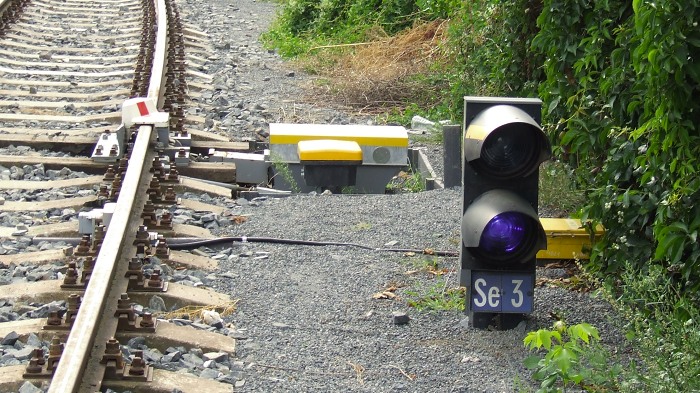
Derailer protected by a shunting signal - Praha-Dejvice
Chock stand
Chocks are used to secure the rolling stock, preventing it from running away. P/E kit of chock stand and chocks is also produced by Hekttor. This stand can be placed anywhere where rolling stock is parked. It can be found next to sidings, loading bays or signal boxes. If you model epoch V or VI, you can definitely get inspired from the pictures below and add a chain securing the chocks on stand. Otherwise they may end up sold for few bucks as a scrap metal.
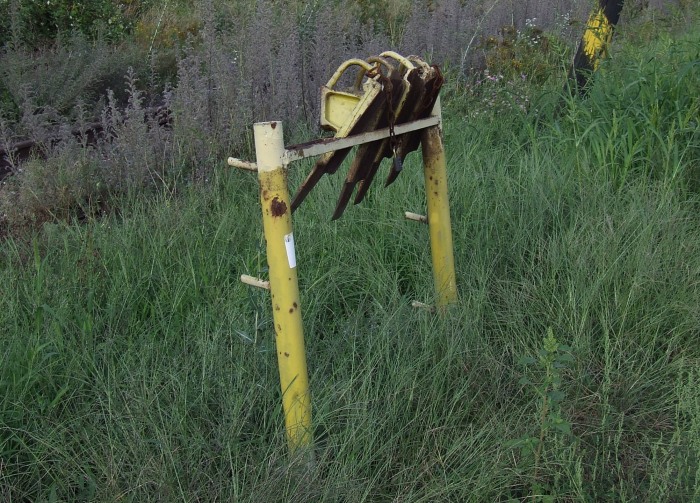
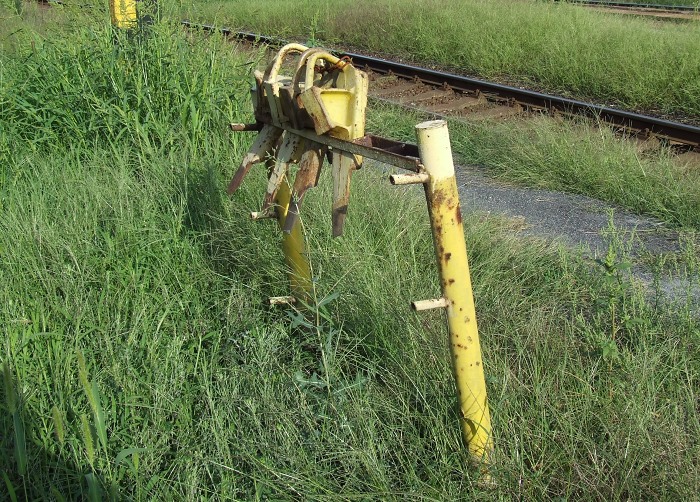
Chock stand at Praha-Ruzyně
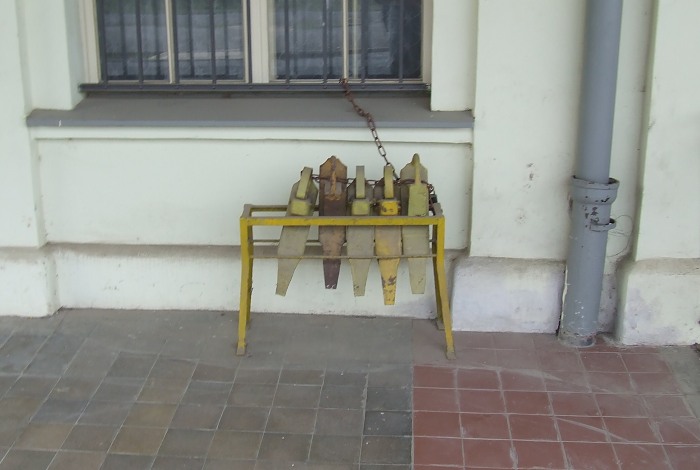
Chock stand at Praha-Dejvice
Tip: If you have a Daa/Daa-k/Ds caboose in your fleet, you can add one or two chocks on its platform.
Point signals and mechanisms
It doesn't matter if you pick pre-made point signals from ESP Pečky or P/E kits from Hekttor, point signals will make your station more alive.
Hekttor kits are available in multiple versions. For the "contemporary" use, ie. epoch VI, you should only use two of them. Either the version for simple points (ie. points where the main direction is straight) or signals for curved and symetric points. The crescent moon signal for curved points is not used anymore, but is acceptable till early epoch V.
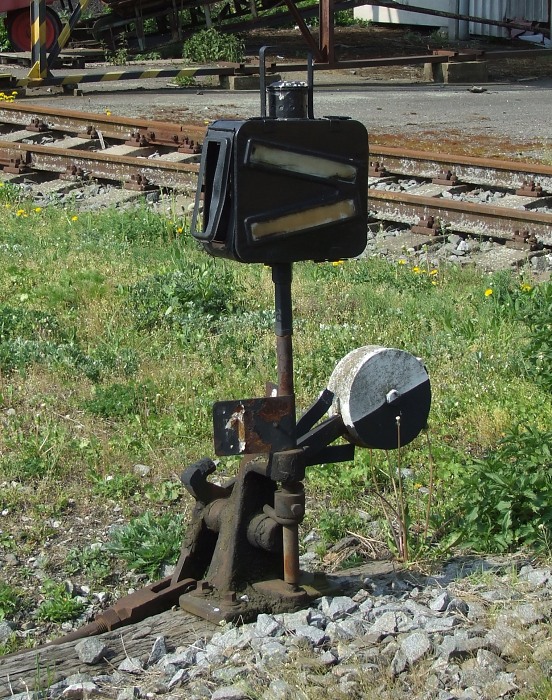
Point signal and mechanism of the manually switched simple point - Lanškroun
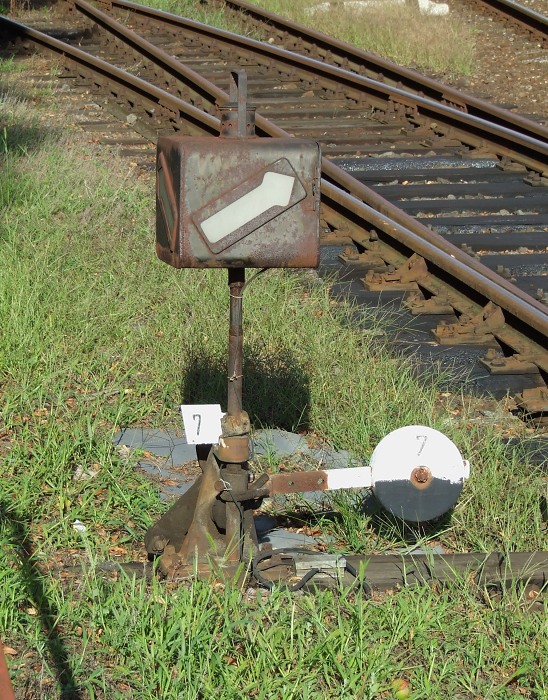
Point signal and mechanism of the manually switched symetric or curved point - Praha-Ruzyně
It is very important to distinguish between locally and remotely operated points as their colors are different. The ballast on the handle of the manually switched point is painted half white, half black. If the white half is on top, then the point is in the default position (default position depends on the particular point). When in either of end positions, the switching handle of the manually operated point should be almost parallel to the ground.
Handle ballast of remotely operated points (both mechanically and electrically) is painted all yellow. In contrast to manually operated points, the end positions of the switching handle are in angle of about 45 degrees to the ground.
The direction in which the switching handle moves is always perpendicular to the point (see pictures).
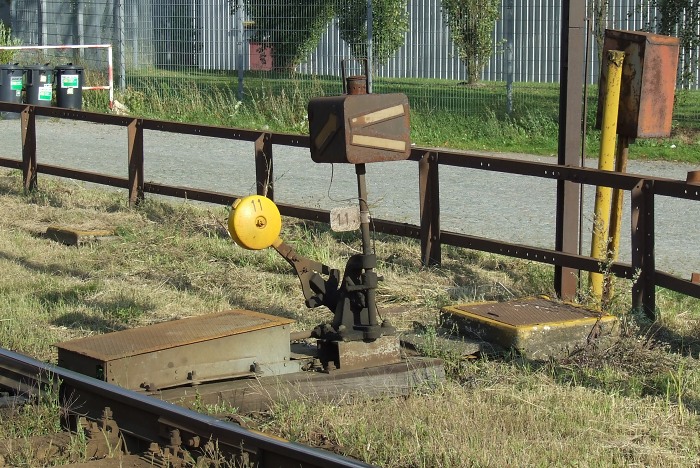
Remotely operated point witch mechanical point machine, switching handle and point signal - Praha-Ruzyně
Remotely operated points don't always have to be coupled to a point signal. Also (especially in epoch VI and on new and reconstructed tracks/lines) the electrically remotely operated points may not have neither the signal nor the switching handle and only an electric switching machine in a box next to the point is present.
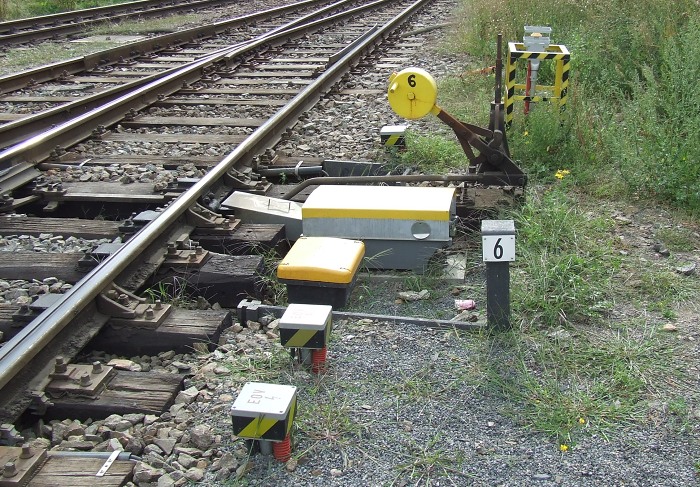
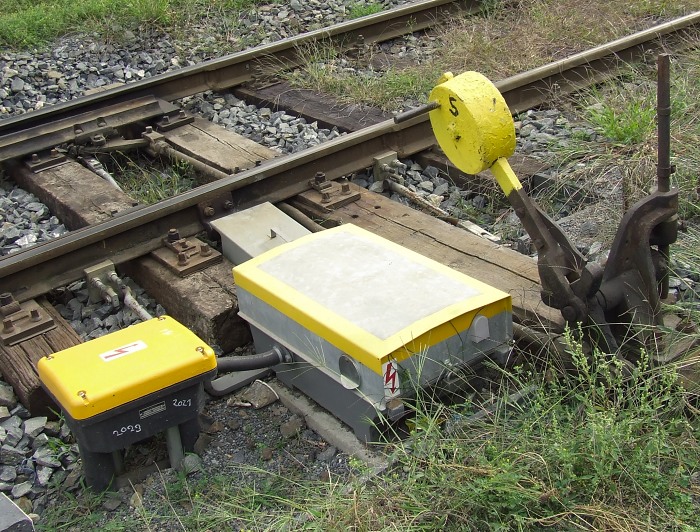
Remotely operated point with electrical point machine and switching handle but without the point signal -
Praha-Dejvice
It has to be reminded that in case you decide to model your points as remotely operated, you should not forget the related infrastructure. So, if you are using points with "yellow ballast" then you should also model their related point machines and in case of the mechanically remotely operated points also the underground cable ducts or the "jingle bell" stands holding wired going from a signal box to the point machine.
Electromagnetic locks
As far as I know, no manufacturer is producing EM lock models at the moment. However, together with local operating panels the EM locks are very important part of many stations. They are used as interface that integrates otherwise unconnected devices (points, derailers) into the station's interlocking system. Presence or absence of the key in the lock directly influences whether a train path over the related point or derailer can be established.
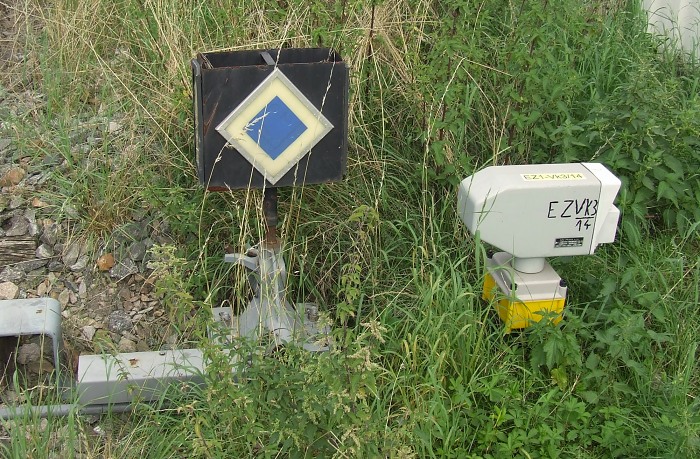
EM lock belonging to the derailer - Praha-Dejvice
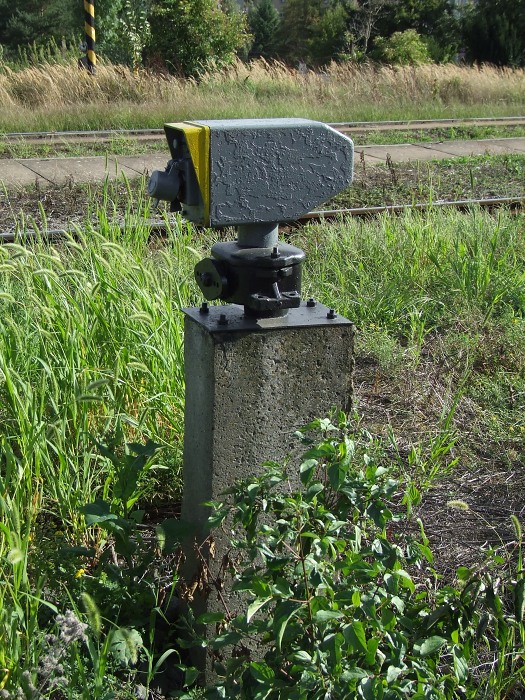
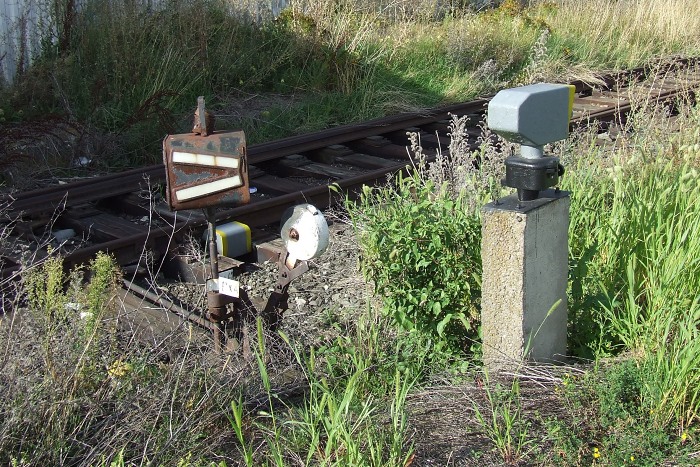
EM lock of a point - Praha-Ruzyně